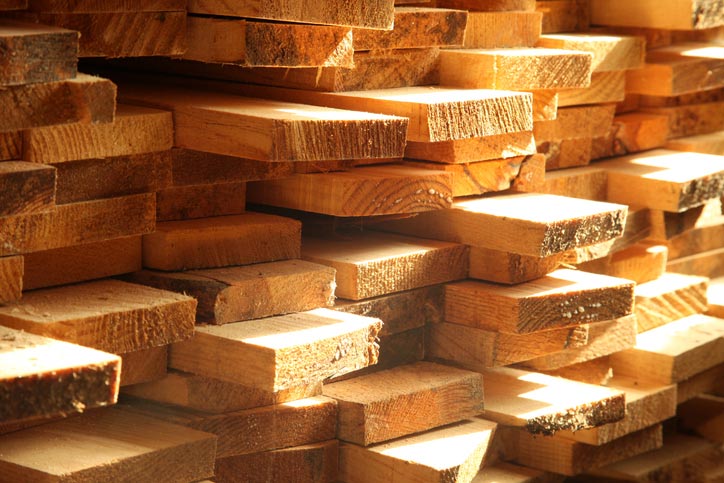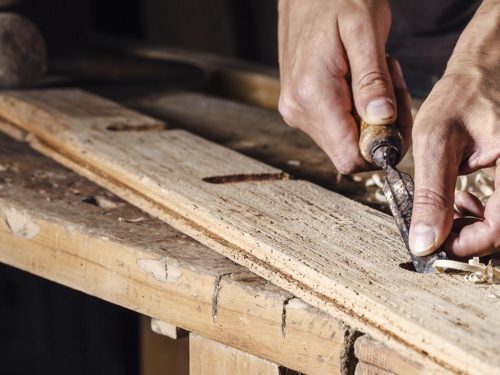
If you have been working with wood for a while, you know that what you call a 2×4 isn’t exactly 2 inches by 4 inches. The actual size is 1 ½ inches by 3 ½ inches.
Have you ever wondered why the board is called by one size while in actuality it is another size? It is because the wood is measured before it is dried and surfaced. When lumber dries it tends to shrink, creating a more dense and stable product. At Cardwell, we dry our lumber in a kiln, which allows us to control the process and ensure you receive the highest quality product possible.
It is also important to know that softwoods and hardwoods are marketed differently.
Softwoods are measured and spoken about in common increments like 2×4, or 1×6, but hardwoods are a different story. When working with more expensive, slow-growing hardwoods – like walnut or cherry –the industry, and ultimately, the consumer, wants to see the most yield from each tree that is cut down, so the measurements are more precise.
Hardwoods are used in specialty items like cabinetry, decorative trim, and hardwood flooring. These kinds of projects often require specific custom measurements. Because of this, hardwoods are measured more specifically than softwoods.
Hardwoods are sold in quarters, which refers to a ¼ inch thickness. So, 4/4 would be 1-inch thickness, 5/4 is 1 ¼ inch thickness, and so on. We sell most of our hardwoods in thicknesses of 4/4, 5/4, 6/4 and 8/4.
If you would like to purchase a hardwood that is exactly 2 inches thick, you would need to look at a thickness of 8/4. But realize that it will have saw marks on the faces at 2 inches. This is what we would refer to as being “rough.” In order for that piece to be completely clean and free from any processing marks, it needs to be planed on both sides, so the actual dimension will be 1-13/16 inches.
Another thing that separates hardwoods from softwoods is the fact that hardwoods are sold in random widths. The main reason for this is the difference between the hardwood and softwood forest management techniques, which allows many of the softwood species to be harvested much like row crops, all approximately the same age, size, and species. This lends itself well to automation and optimizing yield from a particular stand of timber. Hardwoods are almost always from an uneven-aged stand of timber, thus featuring a variety of diameters, lengths, and species. A skilled sawyer with many years of experience is required in order to optimize the yield on each hardwood log.
Lastly, when working with hardwoods, they are sold by volume (board feet) not nominal sizes such as 2×4 or 1×6. A board foot is 1”x12”x12”, or 144 cubic inches. So a board 1” thick, by 3” wide and 48” long will contain 1 board foot. As the thickness increases, the volume increases accordingly. The same board with a thickness of 1-½” will have a volume of 1.5 board feet.
Check out this calculator to see what your project might require.
At Cardwell Hardwoods, all of our 4/4 retail lumber is surfaced to 13/16” and has one edge that has been straightened, an industry standard that has been established by the National Hardwood Lumber Association. This thickness is intended for the final project to finish at ¾” after sanding. If your project requires a thickness other than the standard, we can accommodate that as well, but we do ask that you call and place an order in advance.
All of this might seem complicated, but what you need to know is that we want to give you exactly the right materials for your project. The more you know about hardwood lumber, the easier the process will be in getting the perfect project completed.
We love sharing what we know with our customers. If you ever have any questions, come on in and we will talk you through the process to make sure you get exactly what you need.


